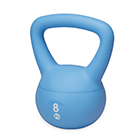POPSUGAR
Trending Stories
Spotlight
The Home Reset
01/01/1970
Refresh Your Living Space
Expert tips and organization ideas to help you spring clean your home.
Read More
Every editorial product is independently selected by our editors. If you buy something through our links, we may earn commission.
:extract_cover()/2024/04/11/896/n/1922441/tmp_znoKnY_2c8ff8bb74e3afb4_Main_PS24_04_Identity_WeddingPlanningDestoyedMyMentalHealth_1456x1000.jpg)
:extract_cover()/2024/04/11/742/n/1922153/tmp_dsy3zn_03e414a53420b140_GettyImages-2148260647.jpg)
:extract_cover()/2024/04/10/843/n/1922794/828a4bef6616e50e95be56.16739416_.jpg)
:extract_cover()/2024/04/11/837/n/1922729/tmp_tIeZMr_b5600819f5ad72f7_Main_PS24_04_F_H_LennyLeather_1456x1000.jpg)
:extract_cover()/2024/03/19/771/n/1922441/4344ca0765f9cbab5151a4.71097090_.jpg)
:extract_cover()/2024/04/11/908/n/1922729/d9a4395666184c816c20d2.76408388_.jpg)
:extract_cover()/2024/04/12/802/n/3019466/4b15a4d966197a3a5f5207.21872990_.jpg)
:extract_cover()/2024/04/09/048/n/1922729/df14ea856615d8e1b04f46.70810493_.jpg)
:extract_cover()/2024/04/12/750/n/1922153/aef9530c661968c46f1922.63015689_.jpg)
:extract_cover()/2024/04/08/852/n/24155406/7a19f58366144517081b76.68057716_.jpg)




:extract_cover()/2024/04/16/832/n/1922283/0ddbaede661eca477665e9.67442551_.jpg)
:extract_cover()/2024/04/12/029/n/1922283/283c35b26619c6d033b245.43898085_.jpg)
:extract_cover()/2024/04/08/719/n/1922283/d57fb6146614184bb71c53.56063776_.jpg)
:extract_cover()/2024/04/03/788/n/1922283/46af8965660d97e61b9094.44808590_.jpg)
:extract_cover()/2024/04/15/733/n/1922564/ce0d36f5661d575cdbc405.83285570_.jpg)
:extract_cover()/2024/04/11/975/n/1922564/0d8f67576618635157b836.60040041_.jpg)
:extract_cover()/2024/04/09/677/n/1922564/889ab03466155bb7cfd937.12376256_.jpg)
:extract_cover()/2024/04/08/964/n/1922564/accb3f5066146b1f521786.91577631_.jpg)
:extract_cover()/2022/06/28/843/n/47518575/fd0b194562bb52f4332690.03943812_.jpg)
:extract_cover()/2024/04/15/988/n/1922153/4a7f15db661dad8d5fcb59.41185935_.jpg)
:extract_cover()/2024/04/15/987/n/1922153/3f702b42661dad46438fc7.75112116_.jpg)
:extract_cover()/2023/02/02/966/n/1922153/ab09f8e663dc353d8725b4.01829053_.jpg)
:extract_cover()/2022/12/15/328/n/1922195/887684ea639c15bfb21e92.01813918_.png)
:extract_cover()/2024/04/16/728/n/1922729/f8df1de2661ea727cf0f57.53044156_.jpg)
:extract_cover()/2024/04/16/703/n/1922441/6b977a7a661e9eb704a4b3.28665086_.jpg)
:extract_cover()/2020/02/26/045/n/1922729/28f8a0875e5707c13ed7a7.50598939_.jpg)
:extract_cover()/2024/04/12/977/n/24155406/b401238b6619b56b41f7d1.49415369_.jpg)
:extract_cover()/2024/04/09/791/n/24155406/40c9d8f966158235c33aa5.52886392_.jpg)
:extract_cover()/2024/01/17/987/n/24155406/80d6fc8c65a857d95088f0.01209290_.jpg)
:extract_cover()/2024/04/16/813/n/1922794/810dc324661ec406476600.87924158_.png)
:extract_cover()/2024/04/11/734/n/1922243/4f564284661811e1774032.30978929_.jpg)
:extract_cover()/2023/09/21/891/n/1922794/c883f0b2650ca67b0d6cd3.09575831_.jpg)
:extract_cover()/2024/04/15/850/n/1922153/7cb736e9661d7eef1f3602.82878698_.jpg)
:extract_cover()/2023/03/16/658/n/1922153/e7aeccb964132c0b389070.65396749_.jpg)
:extract_cover()/2024/04/04/954/n/1922195/a23b94a5660f21828fe439.48420906_.jpg)
:extract_cover()/2024/04/08/828/n/1922153/caa4fc0166143d0c2dcd91.07399124_.jpg)
:extract_cover()/2024/04/01/625/n/1922441/c43a7fd4660abdfae83933.99235823_.jpg)